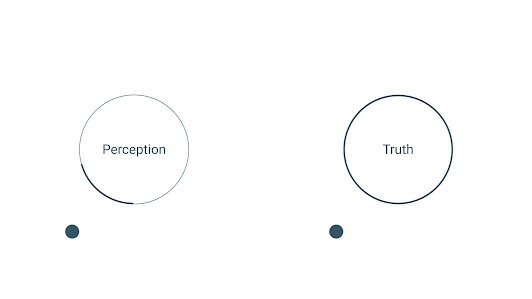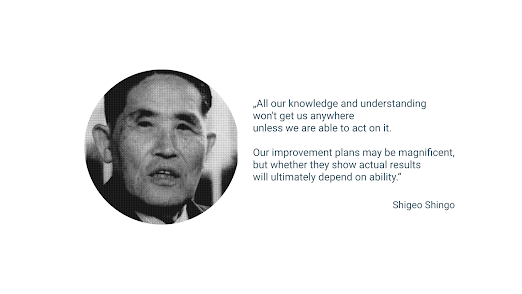L3: The five elements of production
What if I told you I know the receipt how to quickly orientate yourself when in production. What if I even give you that receipt. Will you take it? If yes, keep on reading 😊
Imagine you enter a production shop floor for the first time. What is the first thing you notice? How do you orient yourself in what you see?
Those were my questions for a very long time. When I saw a production site for the first time, I was overwhelmed by machinery, materials, people. Sometimes it looked chaotical. Sometimes very clean and in order. So the first thing I started to notice was whether production was clean. Yeah, after a time, my focus was on 5S. In other words, whether the shop floor is clean and organized. However, I felt it was not enough. I knew I needed to be looking for something more sophisticated. Something more related to LEAN than just 5S.
As you already know, I started to understand the production system after reading books by Shigeo Shingo. In my previous blog, I state that to understand LEAN, we need to understand the basics of production. Well, let's start with the basics. Let's start with the way how to orient oneself in production.
In the book Zero Quality Control, Shigeo Shingo points out that we need to consider five production elements to engage ourselves in production. Even though this clustering of production mechanism is meant to challenge the status quo and look for improvement. I realized they are also helpful in understanding production activities themselves.
Here are the 5 elements of production:
1. The object of production
2. Agents of production
3. Methods
4. Space
5. Time
The object of production: the product.
What question would you ask – to understand what product operators produce at a particular production area? What about is it a semi-finished good or a finished good? How many variances do they make there? What is the lot size? What qualities must the product have to function properly? What are the main benefits for the final customer?
Agents of production: the people in charge of making products, as well as the machines, tools, jigs, and other equipment that assist them.
What question would you ask – to understand which agents they are using to build a product? Let us start with people. How many people work in a particular production area? What is a skill level required for operators? How do people know what they should do? What is the person doing to the product? Switching to machines and equipment. What equipment do operators use to build a product? What machines? Are there some jigs necessary?
Methods: the means by which actions are performed. Speaking about methods, I refer to processes like welding, brazing, pressing, assembly, bending, hardening, etc. Any process that changes the product or improves the quality of the product.
What question would you ask – to understand methods for making products in question? At this point, we should already know what methods are in place as we have already investigated the agents of production. By having a press, the primary method is pressing. By having pneumatic screwdrivers, the primary process will be assembly. So, which method is the person using to transform the product?
Space: where actions are performed and the location to and from which objects are transported.
What question would you ask – to understand the space of production? Can we see the machines arranged based on similarity, or are the machines organized following the process flow? What is the production systematic? Is it a line, a workshop, a dock? If it is a line, what is the shape of the line? If it is a workshop, how is the material supply feeding organized? Is it a defined space for material?
Time: the timing of work or how long actions take.
What question would you ask – to understand the time of producing a product in question? Do they make what is needed, when it is needed, and in quantities that are required? That is quite difficult to observe, but we can learn a lot by asking questions such as: What about customer takt time? What is the line lead time? Process cycle time? Do you have different variances on the same line? What is the change over time?
And what about value-adding time for each method? With this last question, we enter the continuous improvement view of the five production elements. Let us talk about it a bit later. 😉
As I stated in my first blog post: Language matters - I need to be sure that I know what I speak about and that the people I speak with have the same understanding.
Imagine you enter a production shop floor for the first time. What is the first thing you notice? How do you orient yourself in what you see?
Those were my questions for a very long time. When I saw a production site for the first time, I was overwhelmed by machinery, materials, people. Sometimes it looked chaotical. Sometimes very clean and in order. So the first thing I started to notice was whether production was clean. Yeah, after a time, my focus was on 5S. In other words, whether the shop floor is clean and organized. However, I felt it was not enough. I knew I needed to be looking for something more sophisticated. Something more related to LEAN than just 5S.
As you already know, I started to understand the production system after reading books by Shigeo Shingo. In my previous blog, I state that to understand LEAN, we need to understand the basics of production. Well, let's start with the basics. Let's start with the way how to orient oneself in production.
In the book Zero Quality Control, Shigeo Shingo points out that we need to consider five production elements to engage ourselves in production. Even though this clustering of production mechanism is meant to challenge the status quo and look for improvement. I realized they are also helpful in understanding production activities themselves.
Here are the 5 elements of production:
1. The object of production
2. Agents of production
3. Methods
4. Space
5. Time
The object of production: the product.
What question would you ask – to understand what product operators produce at a particular production area? What about is it a semi-finished good or a finished good? How many variances do they make there? What is the lot size? What qualities must the product have to function properly? What are the main benefits for the final customer?
Agents of production: the people in charge of making products, as well as the machines, tools, jigs, and other equipment that assist them.
What question would you ask – to understand which agents they are using to build a product? Let us start with people. How many people work in a particular production area? What is a skill level required for operators? How do people know what they should do? What is the person doing to the product? Switching to machines and equipment. What equipment do operators use to build a product? What machines? Are there some jigs necessary?
Methods: the means by which actions are performed. Speaking about methods, I refer to processes like welding, brazing, pressing, assembly, bending, hardening, etc. Any process that changes the product or improves the quality of the product.
What question would you ask – to understand methods for making products in question? At this point, we should already know what methods are in place as we have already investigated the agents of production. By having a press, the primary method is pressing. By having pneumatic screwdrivers, the primary process will be assembly. So, which method is the person using to transform the product?
Space: where actions are performed and the location to and from which objects are transported.
What question would you ask – to understand the space of production? Can we see the machines arranged based on similarity, or are the machines organized following the process flow? What is the production systematic? Is it a line, a workshop, a dock? If it is a line, what is the shape of the line? If it is a workshop, how is the material supply feeding organized? Is it a defined space for material?
Time: the timing of work or how long actions take.
What question would you ask – to understand the time of producing a product in question? Do they make what is needed, when it is needed, and in quantities that are required? That is quite difficult to observe, but we can learn a lot by asking questions such as: What about customer takt time? What is the line lead time? Process cycle time? Do you have different variances on the same line? What is the change over time?
And what about value-adding time for each method? With this last question, we enter the continuous improvement view of the five production elements. Let us talk about it a bit later. 😉
As I stated in my first blog post: Language matters - I need to be sure that I know what I speak about and that the people I speak with have the same understanding.
The same is valid to what I observe – to what I see. I need to be sure that I know what I look at. Therefore I use the five elements to organize my thinking when observing the production shop floor. I also noticed that it is beneficial if people see the same things as I do. The communication is smoother and we get the consensus on any issue much quicker.
Give it a chance. Next time you are on the shop floor, ask yourself questions about 5 elements. If you will not know all answers, ask a line leader and observe whether your understanding of what is going on at what you observe is better. ;)
Marek



Comments
Post a Comment